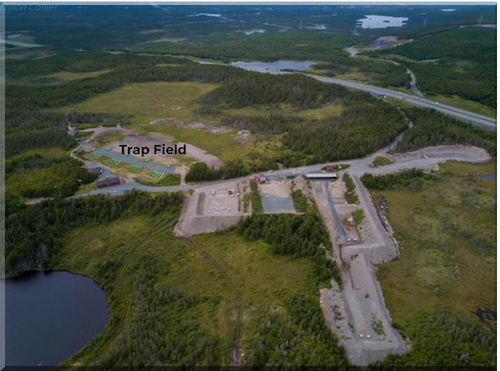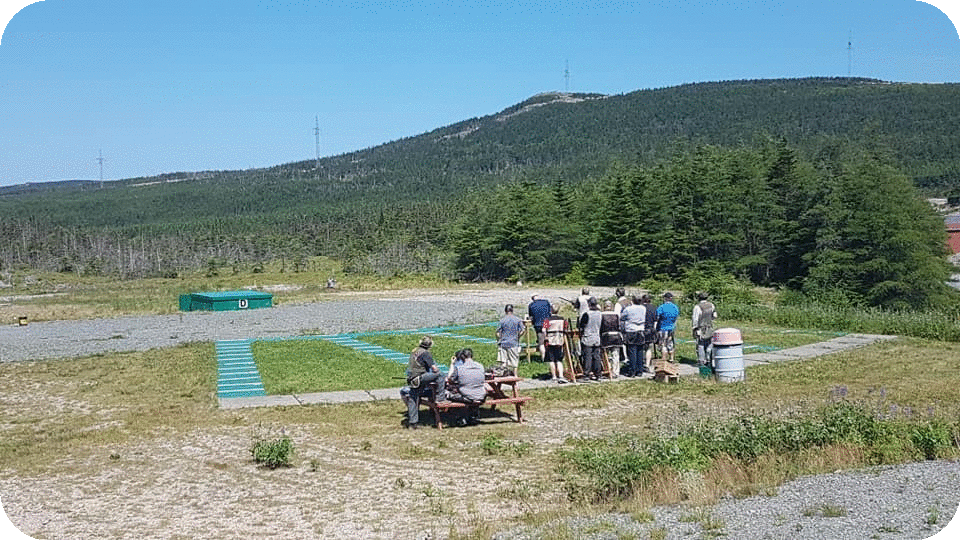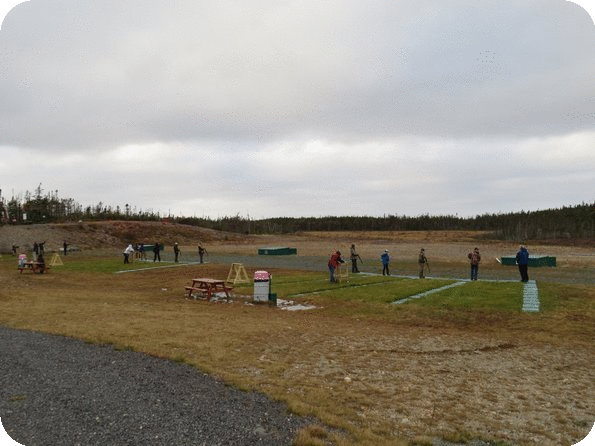The St. John's Rod and Gun Club has one of the best trapshooting fields in Atlantic Canada featuring four ATA spec trap fields each with automatic Pat Trap Machines and Voice Activated release systems. Trapshooting runs (weather dependant) on Sunday afternoons from May through November (please check the club calendar and announcements page for more details). Shooters must provide their own Shotgun and Ammunition (must be shot size 7.5 or smaller) while the club provides clay targets at a fixed cost to the shooter.
Trapshooting is a game of movement, action and split-second timing. It requires the accuracy and skill to repeatedly aim, fire and break the 4 1/4 inch disc which are hurled through the air at a speed of 42mph, simulating the flight path of a bird fleeing a hunter. Trapshooting is welcoming to people of all ages, incomes, and abilities. It does not matter in scoring if the shooter breaks only a small piece of the target or whether they shatter it, the target is considered "dead" bird. Missed targets are scored as "lost".
The SJRGC also regularly hold registered trap shoots in accordance with Amateur Trapshooting Association (ATA) rules, however participants must be ATA members. At all but the largest registered shoots there will always be a trap field set for "fun" shooters who wish to shoot but not participate in the ATA registered event. ATA shooter scores are recorded in the ATA office where all records are kept and yearly averages computed. These records are used for classifying shooters and calculating handicap yardage.
If you are interested in the shooting sports trapshooting is a lot of fun and we highly encourage new shooters to attend our weekly Sunday trap shoots. Whether you want to shoot for fun or competitively, the St. John’s Rod and Gun Club offers a trapshooting experience that suits all shooters.
The trap field is located directly in front of the main Clubhouse located at the top of the club grounds.

Singles is considered the easiest of the three disciplines. In singles, the shooter stands 16 yards away from the center of the "trap house" and shoots at random targets that fly at various angles in front of him/ her. Shooters are grouped into squads, usually made up of up to five people. There are five positions that each shooter shoots from, five shots per position, totaling to twenty five shots or one round. This gives participants a different view of the target flying through the air. Each position is a constant 16 yards from the trap house, each one is spaced three feet apart forming a small arc.
Doubles was added to tournament play in 1911. It is a modified version of Singles, but it is more difficult because shooters must break two targets fired at the trap house simultaneously. One clay pigeon flies to the left while the other flies to the right. The target path remains constant, but the challenge is breaking both targets before they hit the ground. Each target is scored individually, not as a pair.
Handicap is considered the most prestigious event in trapshooting. As in other sports, handicapping strives to make the competition equal among all skill levels. This is accomplished by placing higher skilled competitors further away from the trap house. Based on a shooter's past performances, a shooter is assigned a handicap distance which he/she must shoot. A competitor with a low handicap will shoot no closer than the 18 yard line, while the most skilled shooter is placed at the 27 yard line. It is extremely difficult to win an event from the 27 yard line. Only twice in the last ten years has a Grand American Handicap champion been a 27 yard shooter.
*Trapshooting Discipline information was taken from the ATA’s homepage www.shootata.com
.gif)

